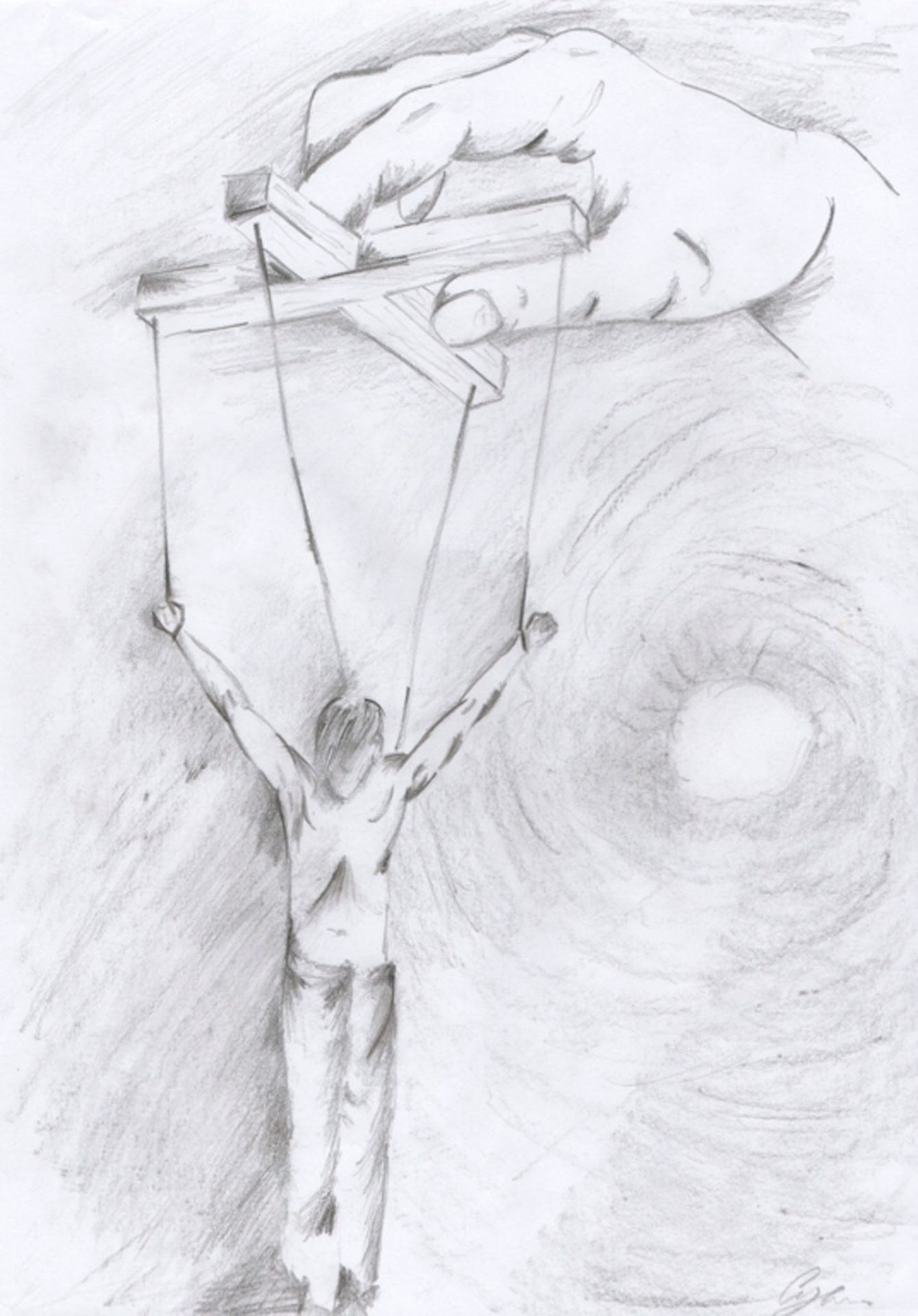The Renal Transplant Ordeal
In my sketch I endeavour to portray what Mr Adair experienced through the duration of and following his first kidney transplant in the early 1970’s. Due to the relative novelty of the operation and the amount of media attention Mr Adair seems to have treated rather like a guinea pig in a lab, an object to experiment on. My image shows Mr Adair being treated like a puppet: a toy with which doctors and other medical practitioners ‘played’ or tested. They constantly and repeatedly visited him, almost objectifying him as an object or plaything, reducing, in my eyes, his human status.
The clean and composed hand in charge of the puppet in the drawing could be interpreted as representing the medical profession and the control they had over the patient, such as when they chose not to consider him for treatment because they assumed he was just a heavy drinker. They regulated his medication, food, activities and most importantly, his visitors. The bowed head of the figure depicted represents the depression he is experiencing as a result of this treatment. I’ve drawn the figure in a similar position to the crucifixion of Jesus Christ to convey how he gave up his life, be it temporarily for three years, to medicine, so doctors could study his progression. This being similar to how Jesus surrendered his life for the forgiveness of our sins and saving mankind. The ease at which the hand holds the figure also shows how light and pathetic Mr Adair was after he lost weight and his will to stand up for himself.
I chose a simple drawing or sketch as the monochromatic colour scheme represents the colourlessness and bleakness of the depression described by Mr Adair, it made me think of the world turning grey. The framing was chosen to represent my perspective, as an outsider, showing frustration and dark sadness at the situation. The image also focuses on a portal of light surrounded by darkness which represents the window in which Mr Adair could see his family. I thought of the life in his eyes and it was this image of darkness with a glimmer of hope that sprang to mind. There is no one else in the picture to portray the loneliness he felt throughout his ordeal as he underwent barrier nursing and could only see friends and family through a small portal. Finally, a harsh image which struck me during the interview related to the liberal prescription of steroids which burned a hole in Mr Adair’s stomach. Hence I’ve used black shadow dripping off the figure’s body to put across the kind of treatment that he put up with.
Mr Adair’s treatment was hopefully a rare case, and I have expressed his experiences in a negative light. However, the inhumanity of Mr Adair’s ordeal touched me and made me think that when doctors treat patients they should put themselves in the patient’s perspective.

Although this drawing is relatively simple, it is the large amount of thought behind it that makes it so powerful. The explanation about how this was one of the first live donor transplants and how the patient had to be at the mercy of doctors for 3 years is so emotive, and the layout of the piece (with the small man hanging from the large puppeteer’s hand) solidifies this strong message. Overall I think it’s incredibly well planned out – well done.
I think it’s amazing how such a simplistic drawing can encompass and expose the past and continuing difficulties that the patient has faced. With the metaphor of a puppet signifying how controlled his life was in the past not just by doctors with their hypotheses on how he became ill, but also by acting as a ‘guinea-pig.’ Not only that, I think writing about how he continues to have 26 tablets a day also enforces how his life is still being controlled now. I think it is a great, universal piece which can be applicable to any transplant patient as well as anyone with a chronic illnesses.